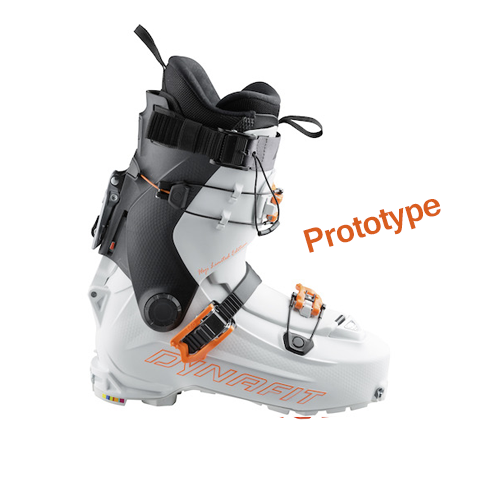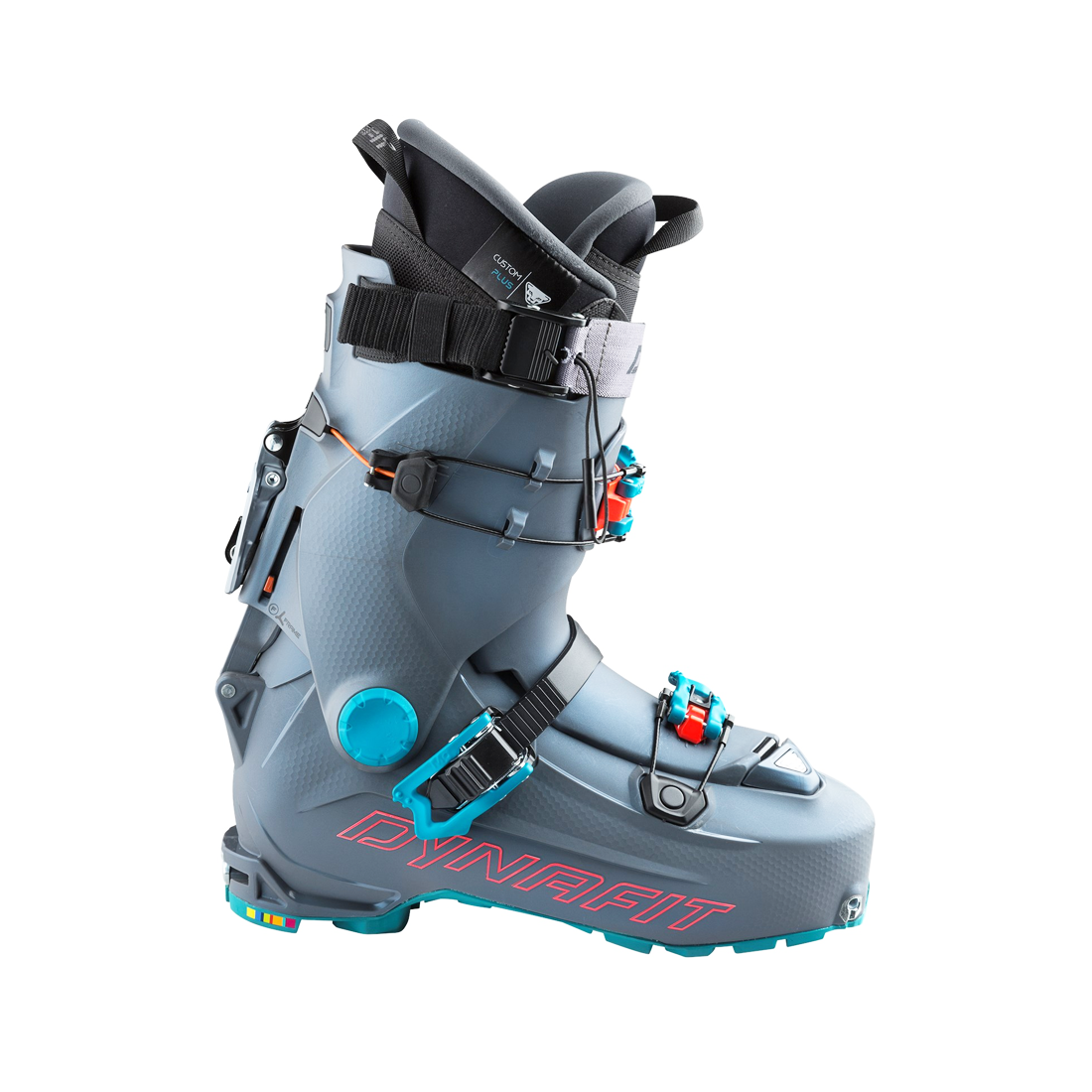
We were lucky to be able to test Dynafit’s prototype of the Hoji Pro Tour free-rando boot last spring and have been looking forward to seeing how the final version compares.
Dynafit claim that the Hoji Pro Tour is "the first touring boot that skis like an alpine".
These boots have touring features normally found in skimo race models plus a level of downhill performance and a powerful progressive flex that is rare in touring boots.
Having been able to test the prototype last spring, we were looking forward to getting our hands on the final version for this winter.
The Hoji offers a similar balance between weight and skiability to the Scarpa Maestrale RS.
Changing between walk and ski modes is quick, simple and achieved with a single movement since the ski/walk mechanism is linked to the buckles and strap as per lighter skimo models. It’s neat and will please those who like simplicity, even if the argument for speed is of minor importance for a free-rando ski boot where the stopwatch counts for little.

Dynafit have put a lot of effort into development and the Hoji Pro Tour has some interesting features:
Progressive 120 Flex
Fans of Full Tilt and Dalbello cabrio design boots will find the same sensations and the progressive flex that is just not possible with traditional shell + tongue boots.
55 ° Cuff Articulation in walk mode
Offering very efficient skinning, with plenty of the articulation, especially when flexing the leg forward, more than on the Maestrale.
Downhill Mode
In downhill mode the cuff of the Hoji is locked forward by 11°. This is great for tourers who like an alpine boot position for the downhill, rather than having a cuff that stays too vertical like many touring boots.
Speed Nose
Originally developed for the TLT 7 series of boots, the Speed Nose saves weight, reduces the volume at the toe and moves the rotation point further back when climbing.
The question is whether this gain in climbing efficiency justify a design that can accept semi-automatic crampons but not automatic crampons (except Salewa’s own specific and expensive model).
Pomoca Sole: grip and durability.
The last few years we’ve seen several boots with thin outer soles that were far too fragile and would not last even a season. The Pomoca sole is designed to remedy this and grips well and well as being designed to last the life of the boots.
Liners
The liners in the boots we tested in the spring were obviously not the definitive version, and we’re pleased to say that this winter the liners are much improved. That said, while on many boots thermoforming the liners is optional, for the Hoji it is essential mould the liners before using the boots. This improves comfort dramatically and while the liners are not the most comfortable we’ve seen, once heated and moulded they are similar to many modern liners. Skiers with high arches may feel some pressure on the top of the foot, similar to that with some Scarpa models. With a last width of 103.5 mm the Hoji suits skiers with medium to wide feet.
On the Snow……
The Hoji is easy to use, with buckles and tongues that are very easy to adjust. You do need a bit of strength for the Velcro booster strap however. The end of the strap is finished with a small piece of leather that looks quite neat. However the additional thickness means that passing the strap through the metal loop required far more force than should be necessary. A minor complaint,but something that should have been fixed before production.
Uphill
Starting uphill, changing the boots to climb mode is quick and simple with the single manipulation mentioned earlier. Very convenient and since there is no need to fiddle with any buckles, it's very fluid. When climbing the 55° cuff movement is good, especially when flexing the leg forward. Climbing efficiency is good for a free-rando boot but cannot be compared with the far greater cuff articulation available on lighter boots such as the Fischer Travers or even the Scarpa F1.
Downhill
On the descent the Hoji is really impressive, the flex is both powerful and progressive, not at all on / off as was the case for the Dynafit Vulcan, for example. This level of performance is ideal for driving wider free-rando and true alpine freeride skis, and the Hoji excels in delivering high level backcountry performance.


Summary
The Hoji is a good choice for experienced backcountry free-rando skiers wanting a boot that is light, climbs efficiently and offers almost alpine performance with a powerful progressive flex. Dynafit have successfully designed the Hoji with the tongue, cuff and shell working in unison to deliver such effective power transmission to the ski.
These boots are also well worth considering if you’re looking for ease-of use since changing between uphill and ski modes is so easy. (If you’re used to adding/removing the tongues on the Dalbello Lupo 10 times a day, these will make a big difference!!).
For lighter classic touring skis, the Hoji will probably be overkill, since these skis will not be able to benefit from the power available in these boots. While many classic ski tourers will not be looking for such stiff boots as the Hoji, the ease of use is a big plus as is the 103.5 mm last, making these good for skiers with wider feet.
We are pretty enthusiastic about the Hoji Pro Tour, it’s a welcome addition to the choice of free-rando models. All touring boots have to fulfil two contradictory demands between uphill and downhill modes, and deciding which are the optimum characteristics is not easy, and varies between skiers in any case. The Hoji Pro Tour is not light enough for long distance fanatics, and probably too stiff for less technical skiers. It’s not as stiff as the alpine models with walk modes such as the Full Tilt Ascendant or Dalbello Lupo 130C. However in terms of weight / skiability the Hoji Pro is certainly one of the best models available this winter, with skiers having the choice between the Hoji Pro (for wide feet) and the Tecnica Zero G Tour Pro and Scarpa Maestrale RS (for narrow feet).
We recommend the Dynafit Hoji Pro Tour for free-rando skiers wanting a boot that tours efficiently and delivers enough power for performance backcountry descents.
Dynafit Hoji Pro Tour AT Boot
Dynafit Hoji Pro Tour W AT Boot


